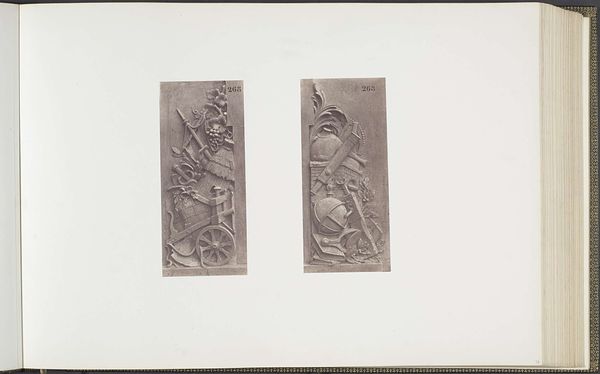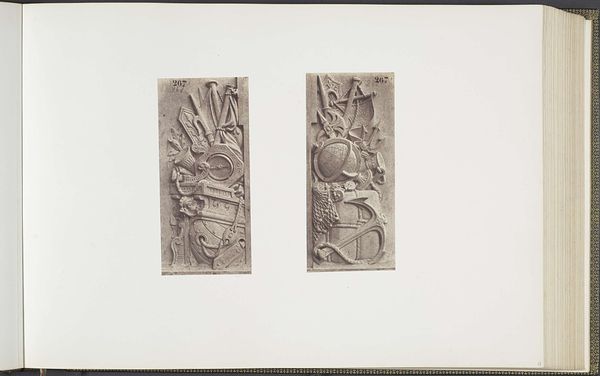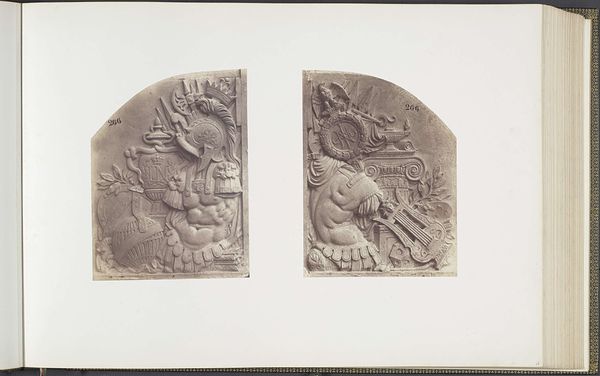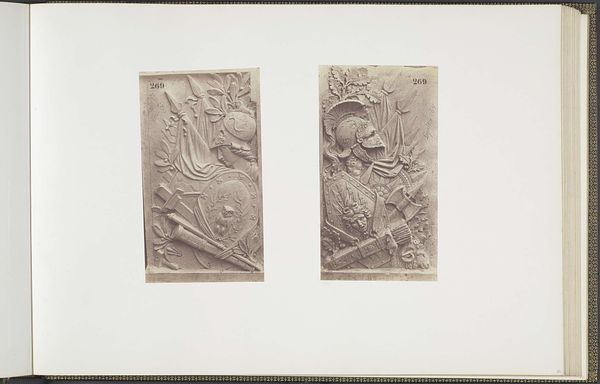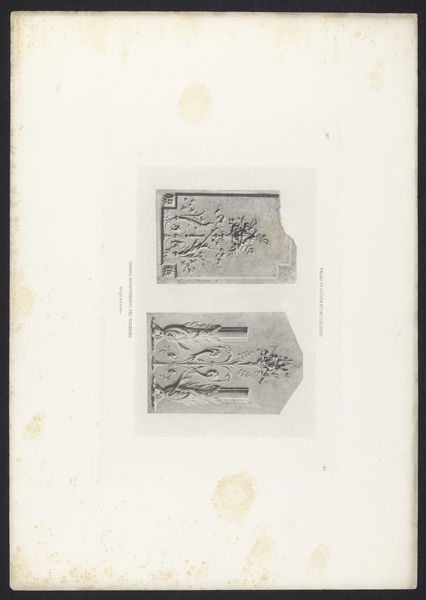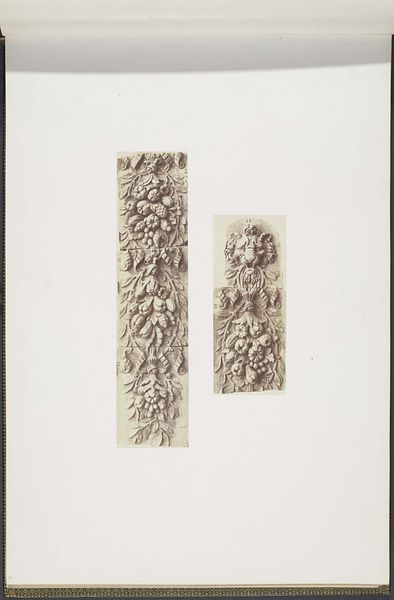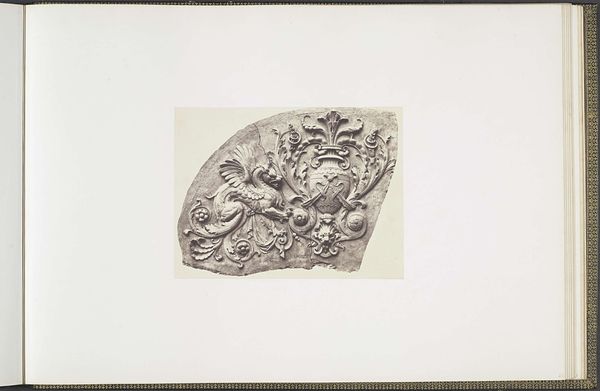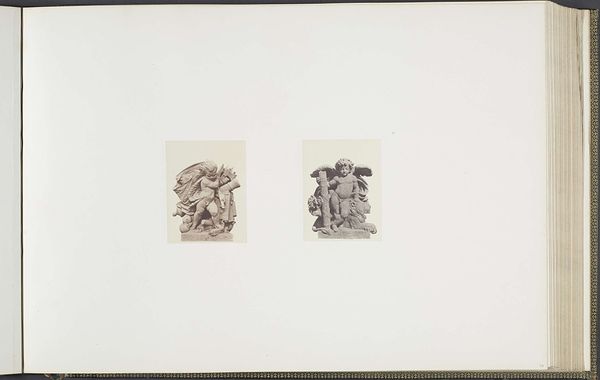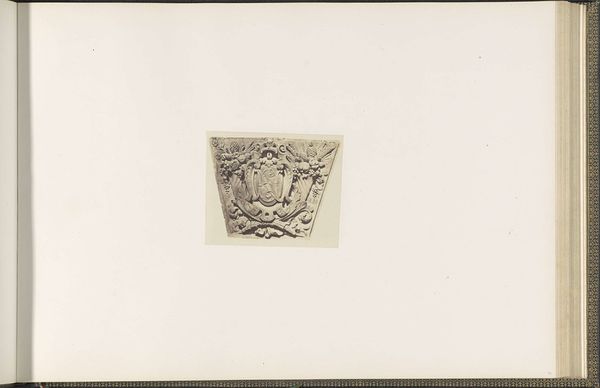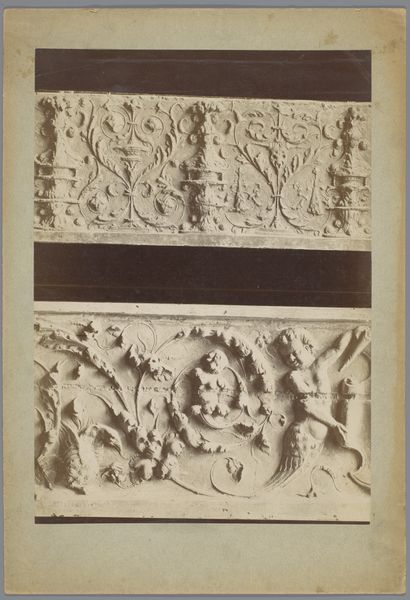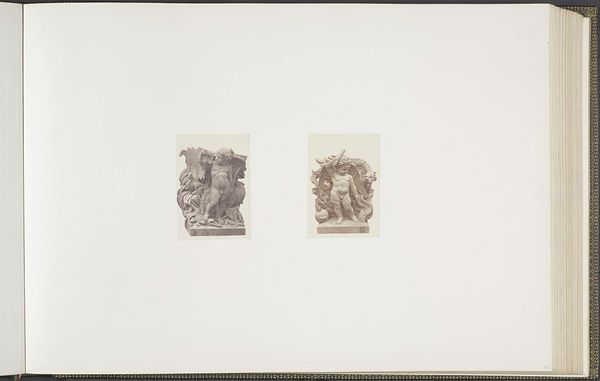
Gipsmodellen voor versieringen op de tweede etage van het Pavillon Richelieu van het Palais du Louvre c. 1855 - 1857
0:00
0:00
edouardbaldus
Rijksmuseum
print, relief, photography, sculpture
#
neoclacissism
# print
#
relief
#
figuration
#
photography
#
sculpture
#
history-painting
Dimensions: height 378 mm, width 556 mm
Copyright: Rijks Museum: Open Domain
These are two photographs by Édouard Baldus, showing plaster models for decorations on the second floor of the Pavillon Richelieu at the Louvre Palace. Baldus's photographs beautifully capture the texture and form of the plaster, each crease, curve, and undulation rendered with clarity. Plaster is a humble material, easily cast, and ideal for quickly producing decorative elements on a large scale. These models would have been translated into stone by skilled carvers, a labour-intensive process that adds value and permanence to the design. The choice of plaster as a medium reflects a society where the division of labor had become more pronounced, separating the roles of designer, model-maker, and artisan. This photograph freezes a moment in that process, reminding us of the many hands and skills involved in the creation of even the most monumental architecture. It encourages us to look beyond the finished facade of the Louvre and consider the social and economic forces that shaped its creation.
Comments
No comments
Be the first to comment and join the conversation on the ultimate creative platform.

